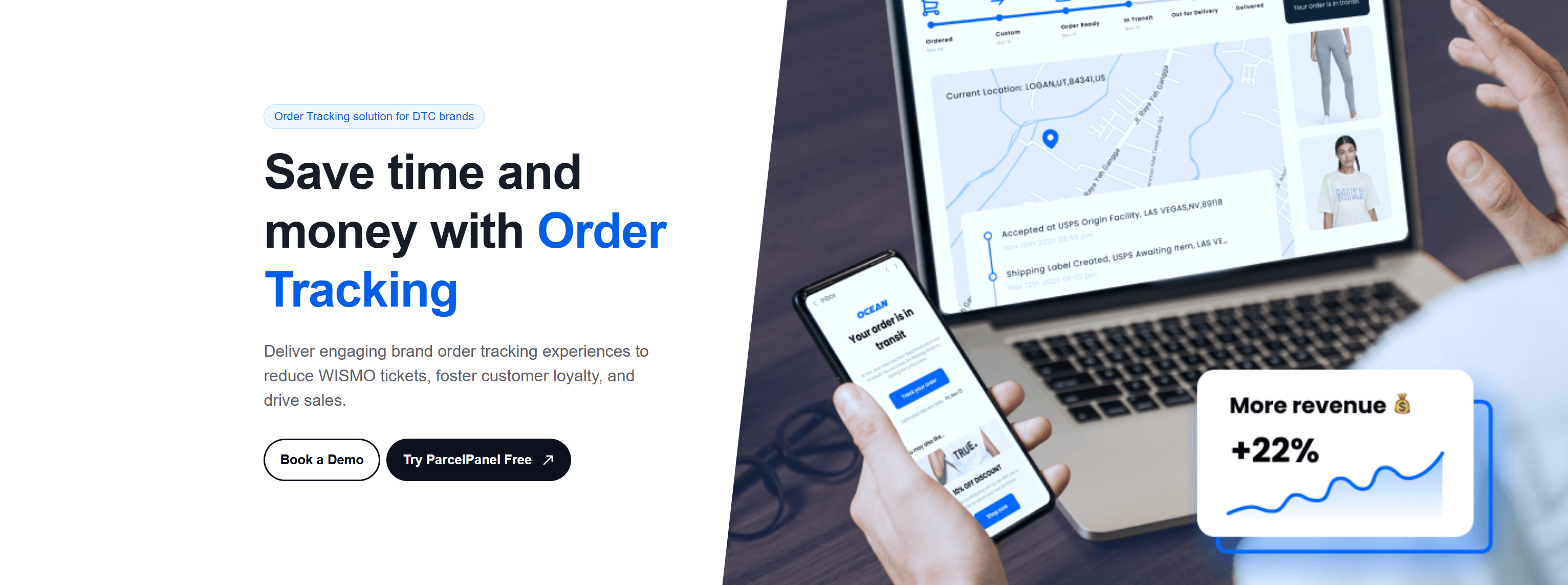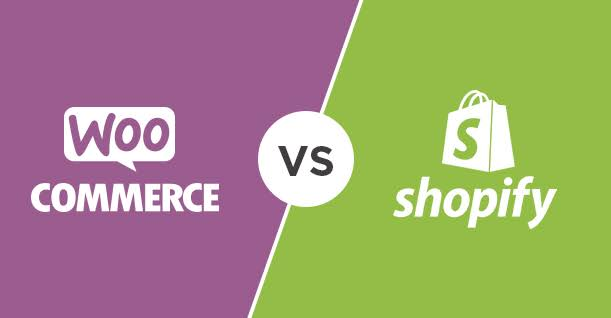Economy Shipping: What It Is, How It Works for Your Business?

Most new eCommerce merchants experience wafer-thin margins. This is often attributed to the high logistics costs of shipping products. As a result, they are always searching for methods to bring down these costs without affecting shipping efficiency and customer experience. One such popular method is economy shipping.
In this article, we will learn everything about economy shipping, including its definition, popular providers worldwide, and how to make use of it.
What is Economy Shipping?
Economy shipping is a cost-effective shipping method targeted at eCommerce businesses that prioritize cost savings over speed.
It is commonly used for low-margin, lightweight, non-urgent products, making it easy for merchants to integrate this method into their existing logistics workflow to optimize costs.
While the delivery time is slower than expedited shipping services, economy shipping remains a reliable and widely available choice for budget-conscious businesses. It is offered by most of the popular couriers including USPS, UPS, FedEx, DHL, etc. Also, economy shipping can be used for both domestic and international shipping.
How Long Does Economy Shipping Take?
There is no fixed answer to this question. A variety of factors come into play while determining a timeline. Here are they:
Shipping distance and destination: The farther the shipment goes, the longer it takes. If you are shipping domestically within the US, economy shipping can take anywhere between 1-5 days. For international shipments, it is going to take longer, most likely in the range of 1–4 weeks.
Carrier Efficiency: Major couriers like USPS, FedEx, and DHL give higher priority to customers who avail their premium services. Economy shipments are usually put on lower priority and may face slower processing due to this.
Seasonal Demand and Holidays: If you are planning to ship during peak periods like Black Friday, you need to factor in delays. This is usually attributed to a long backlog that causes delays in sorting and transit.
Customs Clearance (International): Similarly, there can be delays (days or even weeks) due to shipments getting stuck at customs. This is mostly due to documentation errors or tariff disputes.
Transportation Mode: The transportation mode also plays a role in the time it takes for the products to reach the destination. Here are the common transportation modes:
- Ground Transport: This is very common for domestic economy shipping. It takes anywhere between 3-7 days to reach the destination.
- Sea Freight: This is the most common mode of transport used for international economy shipping. It takes anywhere between 2 to 8 weeks to deliver your goods.
- Air Freight: This is very rare for economy shipping. But a handful of companies do offer air freight for international economy shipping and prioritize it below their express or premium services.
Handling and Transit Points: If your shipment journeys through multiple sorting hubs or warehouses, delivery times will extend. Complex logistics networks usually have this problem.
How to Estimate Economy Shipping Time?
Most couriers offer estimated delivery windows for specific routes on their websites. For instance, FedEx has shared the following information on its website regarding the timeline for its its International Economy service:
However, add an additional 3–5 days to the above number to account for potential delays. To prevent customer dissatisfaction due to delays, you can:
- Monitor the progress of shipment regularly
- Address issues (e.g., customs holds) on time
- Share the exact delivery date with the customers
How Long Do Economy Services Take Within the US?
Domestic economy services within the US take anywhere between 1-5 days. Take the case of USPS Priority Mail, which is an economic domestic shipping service offered by USPS.
According to their website, it takes 1 to 3 days to ship from one part of the country to another.
Say you are shipping from New York to Los Angeles; it takes 3 whole days for the shipment to reach its destination.
Here is an interactive map offered by USPS depicting the time it takes to deliver packages to different states in the US:
Economy Shipping Services: USPS, UPS, FedEx, and DHL
There are several carriers that offer economic shipping options for both domestic and international deliveries.
In this section, we will compare 4 popular courier services – USPS, UPS, FedEx, and DHL, to help eCommerce merchants pick the most suitable and budget-friendly shipping solution:
1. USPS Economy Shipping
The United States Postal Service (USPS) claims to be the only courier that reaches every corner of the United States. They offer a variety of budget-friendly shipping services that are reliable and fast, no matter where the destination is.

Domestic Shipping
- Ground Advantage: This ground-based service claims to ship all packages within 2–5 business days. However, it is suited only if your package weighs less than 70 lbs. USPS tracking service is included. Prices start at just $5.25 at a Post Office location.
- Priority Mail: This service delivers your parcel in 1–3 business days across all the states in the US. There are flat-rate options and up to $100 insurance included. The maximum weight allowed is again 70 lbs. Prices start at just $9.35 at a Post Office location.
- First-Class Mail: This is suitable only for sending envelopes, postcards, and other lightweight parcels that weigh less than 13 oz. Delivery takes 1-5 days and prices start at $1.50 for large envelopes (considered as small packages).
International Shipping
Priority Mail International: This international service delivers to over 180 countries in 6–10 business days. Like domestic services, this also supports packages up to 70 lbs. Prices start at $30.90 if using the free flat-rate boxes and envelopes of USPS.
2. UPS Economy Shipping
UPS is a global leader in shipping and operates in 200+ countries. While it doesn’t offer as many economy services as USPS, it remains a popular option for both domestic and international shipping due to its reliability and wide reach.

Domestic Shipping
- UPS Ground: This is an affordable ground shipping option that promises to deliver packages to any part of the US within 1–5 business days. Unlike USPS, UPS offers a much higher weight limit of 150 lbs. Prices start at $4.75 for delivering a 1 lb commercial package.
- UPS SurePost: This is a hybrid service combining UPS and USPS for last-mile delivery. It is one of the most affordable options available to domestic users. However, delivery takes 2–7 business days. There is also a lower weight limit of 70 lbs. Prices start at $12.28 for a 1 lb package.
International Shipping
UPS Worldwide Economy: This door-to-door international delivery service delivers to 210 countries with a delivery time of 5-8 days (if duties are prepaid) and 5-12 days (if duties are unpaid). It supports packages weighing up to 150 lbs. Prices start at $85.24 for a 1 lb package.
3. FedEx Economy Shipping
Over the years, FedEx has created a name for itself as a reliable shipping service that also delivers at a staggering speed. Their economy shipping is considered to be one of the fastest in the industry, especially the international one.

Domestic Shipping
- FedEx Ground: This affordable shipping method from FedEx uses ground-based transport for delivery. It takes 3–7 business days to deliver to Alaska and Hawaii and only 1-5 days to deliver to other states. It allows packages up to 150 lbs. Prices vary considerably. For instance, if you are shipping a package within the United Kingdom, it costs £2.79 for a package weighing less than 5 kg.
International Shipping
- FedEx International Economy: While this might not be the most affordable option on the list, it is the fastest economy option available for international shipments. It takes 2-5 business days to deliver packages across the world. You can send packages up to 150 lbs using this method. Prices start at $49.45 for a 1 lb package.
4. DHL Economy Shipping
DHL is a German supply chain management solution known for its express mail service and economy shipping solutions. It is particularly known for its focus on the eCommerce industry and helping businesses scale their store beyond borders.

Domestic Shipping
- DHL Economy Select: This shipping service lets you send packages to over 30 countries in Europe at affordable rates. A maximum weight of 154 lbs is allowed, and the packages will be delivered in a few days. This is a popular choice for eCommerce merchants looking to expand into European markets without breaking the bank.
International Shipping
- DHL eCommerce (International): This lets you ship to over 220 countries with delivery speeds ranging from 4-12 business days. It supports up to 44 lbs in weight and is ideal for eCommerce packages.
Here is a comparison table of all the economy shipping services provided by the above four couriers:
Comparison Table
| Carrier | Service | Delivery Time | Starting Price | Weight Limit | Countries Covered |
| USPS | Ground Advantage | 2–5 business days | $5.25 at a Post Office location | Up to 70 lbs | USA |
| Priority Mail | 1–3 business days | $9.35 at a Post Office location. | Up to 70 lbs | USA | |
| First-Class Mail | 1–5 business days | $1.50 for small parcels under 13 oz | Up to 13 oz | USA | |
| Priority Mail International | 6–10 business days | $30.90 if using the free flat-rate boxes and envelopes of USPS. | Up to 70 lbs | 180+ countries | |
| UPS | UPS Ground | 1–5 business days | $4.75 for a 1 lb package | Up to 150 lbs | USA |
| UPS SurePost | 2–7 business days | $12.28 for a 1 lb package | Up to 70 lbs | USA | |
| UPS Worldwide Economy | 5–12 business days | $85.24 for a 1 lb package | Up to 150 lbs | 210+ countries | |
| FedEx | FedEx Ground | 1–5 business days | $10.10 for a 1 lb package | Up to 150 lbs | USA |
| FedEx International Economy | 2–5 business days | $49.45 for a 1 lb package. | Up to 150 lbs | 215+ countries | |
| DHL | DHL Economy Select | 2–5 business days | £2.79 for a package weighing less than 5 kg within the UK | Up to 154 lbs (70 kg) | Europe |
| DHL eCommerce (International) | 4–12 business days | Need to get a quote. | Up to 44 lbs (20 kg) | 220+ countries |
Last updated on Apr.1st, 2025.
Economy Shipping vs. Standard Shipping
While economy shipping and standard shipping are very similar in many aspects, there are subtle differences between the two:
- Cost: Economy shipping is the most cost-effective option provided by a courier. Standard shipping, on the other hand, is slightly more expensive.
- Speed: Economy shipping usually has the longest delivery times among non-expedited services.. Standard shipping, on the other hand, offers a faster turnaround, though not as fast as expedited shipping.
- Ideal for: Both of them are well-suited for sending low-value, non-urgent goods within the country or across borders. However, they might not be suitable for your time-sensitive packages.
- Tracking: The tracking updates offered by economy shipping are usually not frequent or proactive. You will receive more consistent and proactive updates in standard shipping.
Economy Shipping vs. Ground Shipping
While economy shipping and ground shipping are often used interchangeably, there are key differences between the two:
- Cost: Economy shipping is typically the most affordable shipping service offered by an individual shipping carrier. Ground service, on the other hand, need not be the cheapest service by a courier.
- Mode: Ground shipping always uses ground-based transport, like trains or roads, to deliver packages. Economy shipping may use a combination of ground, sea, or even air transport, depending on the carrier and destination.
- Speed: Ground shipping offers a faster turnaround than economy shipping. Based on the shipping carrier, ground shipping can offer same-day, next-day, and standard delivery times within the country. Economy shipping usually does not deliver at such speeds.
- Ideal for: Economy shipping is suitable for both domestic and international deliveries, while ground shipping is usually the preferred choice for domestic deliveries.
Economy Shipping vs. Expedited Shipping
Here are the major differences between these two popular types of shipping:
- Cost: Expedited shipping is way more expensive than economy shipping.
- Speed: Expedited shipping is the fastest shipping mode by all carriers. The delivery time of expedited shipping is usually within the same day or the next day. Economy shipping takes longer, typically from several days to weeks, depending on the destination.
- Suitable for: Expedited shipping is suitable mainly for time-sensitive and high-value products. Economy shipping is ideal for low-margin and non-urgent products.
- Tracking: Unlike economy shipping, expedited shipping provides more frequent, detailed tracking updates to merchants.
Is Economy Shipping Right for Your Ecommerce Business?
Economy shipping is not suitable for every business model. To determine if it is the right shipping method for your eCommerce business, go through the following steps:
Step 1: Assess Cost vs Benefits
Economy shipping might seem extremely attractive if you are looking to minimize expenses.
However, you should carefully analyze whether the lower shipping fees outweigh the potential downsides. For instance, saving a few dollars should not lead to lost sales due to customer impatience.
The best solution is to pass the cost savings to customers or reinvest them into marketing and growth strategies.
Step 2: Understand Customer Delivery Expectations
Evaluate whether your target audience prioritizes speed or is willing to wait for cost savings.
Some customers expect fast shipping and may abandon their carts if only economy options are available. To retain flexibility, offer multiple shipping choices. More importantly, set clear expectations regarding delivery time at checkout.
Step 3: Match Shipping to Product Characteristics
The type of products you sell plays a crucial role in determining if economy shipping is suitable. Lightweight, low-cost, or non-perishable items like clothing and accessories work well with slower shipping.
However, fragile, perishable, or high-value products like food or electronics might require faster, more secure shipping, like expedited shipping, to reduce risks.
Step 4: Align It with Your Marketing Strategy
Your shipping option should support your marketing efforts. If you market affordability as a key selling point, you can always go ahead with economy shipping.
However, if you have been promoting convenience and fast delivery, slower shipping could harm your brand perception greatly.
Step 5: Evaluate Logistics Infrastructure and Capabilities
Your choice of economy shipping also depends on your existing logistics setup. A well-optimized supply chain can help mitigate the challenges of slower shipping speeds.
On the other hand, an inefficient system may lead to additional delays and customer dissatisfaction. For example, if your warehouses are far from major distribution hubs, shipping times may increase significantly.
Step 6: Ensure that it Helps with Customer Retention
Long delivery times can impact customer satisfaction and brand perception. If customers associate your brand with slow shipping, they may turn to competitors offering faster alternatives.
Mitigate this risk by providing regular tracking updates and clear communication on the current status. You can also highlight how much the customers are saving by opting for economy shipping.
Step 7: Use it Extensively for Reverse Logistics
Economy shipping can be a cost-effective shipping solution for handling returns. For starters, returns are non-urgent, under most circumstances. To help the customers with returns, you can share printable return labels and the location of convenient drop-off hubs to streamline the process.
Tools like ParcelPanel Returns & Exchanges help automate most of the returns processes. It improves the customer return experience while keeping reverse logistic shipping costs low.
Economy Shipping Tracking: Explained
One of the biggest disadvantages of economy shipping is the infrequent tracking updates offered. It is also less detailed than faster and premium shipping options. While expedited or express shipping may offer real-time tracking, economy shipping updates show only major transit points.
Any potential delays due to lower shipment priority, carrier processing times, or international customs procedures are usually not shared with customers on time. This can frustrate them to a great extent.
To ensure a smoother post-purchase experience, you can use specialized tracking tools like ParcelPanel for improved visibility and timely customer updates, no matter what type of shipping option is selected.
Track Economy Shipping with ParcelPanel

A robust economy shipping tracking function can easily compensate for slower delivery times.
The post-purchase experience is given a strong boost by keeping customers informed of order status throughout delivery.
ParcelPanel Order Tracking provides real-time tracking updates and automated shipping notifications for merchants and customers, whether you have selected economy, expedited, or standard shipping. It is the tool you use to monitor orders and proactively respond to any issue in transit.
With its seamless integration with 50+ Shopify apps, you can track shipments without disrupting your current workflow.
Whether domestic or international shipments, ParcelPanel powers the tracking process for businesses and customers. Book a demo today to streamline your order tracking process.
Final Words
Although economy shipping has a longer transit time, it still remains a popular choice for non-urgent shipments, particularly in the eCommerce industry.
Now that you know all the key aspects, you can make an informed decision based on your budget and shipping priorities.
Economy Shipping FAQs
How long does FedEx International Economy Shipping take?
FedEx International Economy takes 2-5 business days to deliver your packages. Considering other options available, this is a really quick shipment method.
How fast is the economy shipping?
Economy shipping has the lowest delivery speed out of all the shipping options offered by an individual courier. Generally speaking, it takes between 1-5 days for domestic and 1-4 weeks for international.
What is economy ground shipping?
Economy ground shipping is a blend of two concepts – a low-cost shipment method that uses ground-based transport (road or rail) to deliver packages. It is a popular domestic shipment method.
How much is the economy shipping?
Economy shipping is usually the most affordable shipping option offered by an individual courier. While the price is hugely dependent on the weight of the package and the distance, it is usually in the range of $5 to $30.










![Top 10 Loop Returns Alternatives and Competitors [2025]](https://images.surferseo.art/355d37b8-6936-4be4-b677-f5314b151724.png)
![Top 10 AfterShip Alternatives and Competitors [2025]](https://www.parcelpanel.com/blog/wp-content/uploads/2025/03/20250325102130525.png)















